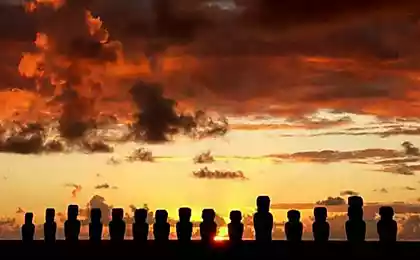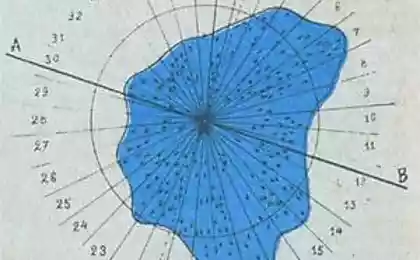786
Tunguska meteorite - a great mystery


Morning of June 30th (17th on old style), 1908, seemed to be no signs of anything unusual, and all of a sudden. In the sky over Siberia appeared glowing object with a long fiery tail, and at 7 o'clock 17 minutes of local time in the basin of Stony Tunguska explosion was heard, and maybe a series of explosions, the total capacity of two thousand times higher than the Hiroshima bombing.
In the fall of the Tunguska meteorite Taiga was destroyed over an area of 2 sq. M. km, killed many animals, literally shook the entire continent of Eurasia, and the shock wave circled the globe twice. Fangled Barometers at meteorological stations in Cambridge and Petersfield marked jump in atmospheric pressure, any fluctuations in Earth's magnetic field, and all the way from Siberia to the western borders of Europe from June 30 until July 2 observed the amazing white nights. Warning researchers Berlin and Hamburg attracted noctilucent clouds are usually formed as a result of the accumulation of tens of kilometers above the Earth's surface tiny particles of ice, abandoned to the volcanic eruption, but nothing like the summer of 1908 did not occur.
Witnesses who were in the 200-300 km from the epicenter, noted a strange, indeed deathly silence that came shortly after 7:00 am July 30, 1908, when all of a sudden did not hear the bird schimeeta, rustling leaves and other common sounds taiga. In addition, clear morning suddenly dimmed, and all subjects, including leaves and grass, have gained a yellow color, and then they began to orange, red, burgundy ... By midday all went black, and in the direction of Stony Tunguska could be seen as a solid silver wall and all these strange phenomenon lasted about eight hours.
Impressions Siberians became known many years later, and the researchers concluded that the disaster at the Stony Tunguska was the result of a huge meteorite fall. This event, apparently, was not enough interesting, then forget about it made war and revolution, and only in 1921 the academician Vladimir Vernadsky, the founder of the modern earth sciences, instructed Leonid Alekseevich Kulik, enthusiast studies of meteorites, to conduct the necessary research. As a result, the first trip to Siberia in the autumn of 1921 established only that the size of the meteorite was a giant and he fell in a pool of Stony Tunguska, where the scientist get failed.
Research continued six years later, and April 13, 1927 Evenk Pavel Aksenov Kulik led the expedition to Mount Shahroma, which offers an awesome view of the huge space, completely charred trees strewn with felled. Only six weeks later, on May 30, scientists got to the epicenter, where, to their surprise, there was a crater with dimensions corresponding to the power of the explosion. Instead, they found a relatively small wetland lake and a plurality of circular depressions, also filled with water. Between them rose the charred dead trees, many of which were, as it were, split by lightning. On this basis, Kulik suggested that the meteorite fell apart before it reached the Earth's surface, and for twelve years he has been involved to find the meteorite fragments. During an expedition in the spring of 1930, Hunter Konstantin Dmitrievich Jankowski told researchers that found close to the amazing stone 2 m long, 1 m wide and a height of 80 to 90 cm, has an exceptionally porous structure, as if covered with a light-yellow glaze. Hunter took a picture of his find, but the path to it is not marked, and since then, "Jankowski Stone" so no one saw.
Strange sculptures on the island of Apollo
The fastest in the world of the baby crawls 4 meters in 8 seconds























